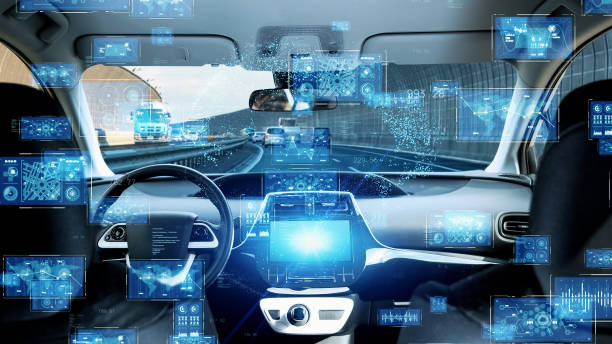Holographic Head-Up Displays: The Future of Driver Information Systems
Picture this: You're cruising down the highway, and instead of glancing down at your dashboard, vital information seems to float in mid-air before your eyes. Speed, navigation, and even collision warnings appear to hover just beyond your windshield, allowing you to keep your eyes on the road. This isn't science fiction—it's the cutting-edge world of holographic head-up displays (HUDs), poised to revolutionize how we interact with our vehicles and the road ahead.

As automotive technology advanced, so did HUDs. LED and LCD-based systems improved brightness and color, while larger projection areas enhanced functionality. Yet, these advancements still confined information to a flat, two-dimensional plane—until now.
Enter the Third Dimension
Holographic HUDs represent a quantum leap in automotive display technology. Unlike traditional HUDs, which project information onto the windshield itself, holographic systems create three-dimensional images that appear to float in space beyond the glass. This breakthrough offers several key advantages:
-
Expanded field of view: Holographic projections can occupy a much larger area without obstructing the driver’s vision.
-
Depth perception: Information can be displayed at various perceived distances, prioritizing critical data.
-
Enhanced clarity: 3D projections are less susceptible to washout from bright sunlight or reflections.
-
Augmented reality integration: Holographic tech seamlessly blends virtual information with the real world.
The Technology Behind the Magic
At the heart of holographic HUDs lies a complex interplay of optics, lasers, and advanced computing. Key components include:
-
Laser light sources: Precise, high-intensity beams create the foundation for holographic imagery.
-
Spatial light modulators: These devices shape the laser light into specific patterns.
-
Holographic optical elements: Specially designed films or glass elements help form and direct the 3D images.
-
Eye-tracking systems: Cameras monitor the driver’s eye position to ensure optimal image alignment.
-
Powerful processors: Real-time rendering of 3D graphics requires significant computing power.
Leading automotive suppliers and tech companies are investing heavily in refining these systems, with some prototypes already demonstrating remarkable capabilities.
Beyond Simple Information Display
Holographic HUDs open up a world of possibilities for enhancing the driving experience and improving safety. Some potential applications include:
-
Adaptive navigation: 3D arrows and lane guidance that appear to overlay the actual road ahead.
-
Collision avoidance: Holographic alerts that highlight potential hazards in the driver’s field of view.
-
Night vision enhancement: Infrared camera feeds converted into holographic overlays to improve visibility in low-light conditions.
-
Vehicle-to-vehicle communication: Visual representations of data shared between nearby cars, such as emergency braking warnings.
-
Gesture control: Drivers could interact with holographic menus and controls using hand movements, reducing physical distractions.
Challenges and the Road Ahead
While the potential of holographic HUDs is immense, several hurdles remain before widespread adoption:
-
Cost: Current prototypes are expensive, limiting their use to high-end vehicles.
-
Computational demands: Rendering complex 3D graphics in real-time requires significant processing power.
-
Regulatory approval: Safety standards for augmented reality displays in vehicles are still evolving.
-
Driver distraction: Care must be taken to ensure that holographic displays enhance, rather than detract from, driver focus.
-
Daylight visibility: Achieving sufficient brightness and contrast in all lighting conditions remains challenging.
Despite these obstacles, many industry experts believe holographic HUDs will become commonplace within the next decade. As costs decrease and technology improves, we may soon find ourselves navigating a world where the line between digital information and physical reality becomes increasingly blurred—at least when we’re behind the wheel.
The Broader Implications
The advent of holographic HUDs in automobiles is just the beginning. This technology has the potential to reshape not only how we drive but how we interact with information in our daily lives. From smartphones to smart homes, the ability to project three-dimensional data into our environment could fundamentally alter our relationship with technology.
For the automotive industry, holographic displays represent a new frontier in the ongoing quest to create safer, more intuitive, and more engaging vehicles. As cars become increasingly connected and autonomous, the role of the driver is evolving. Holographic HUDs could serve as a bridge between traditional driving and the self-driving future, providing a natural and immersive interface for both human control and machine assistance.
As we look to the horizon, it’s clear that holographic head-up displays are more than just a flashy new feature. They represent a fundamental shift in how we perceive and interact with our vehicles and the world around us. The road ahead is filled with exciting possibilities, and for once, we’ll be able to see them floating right before our eyes.





